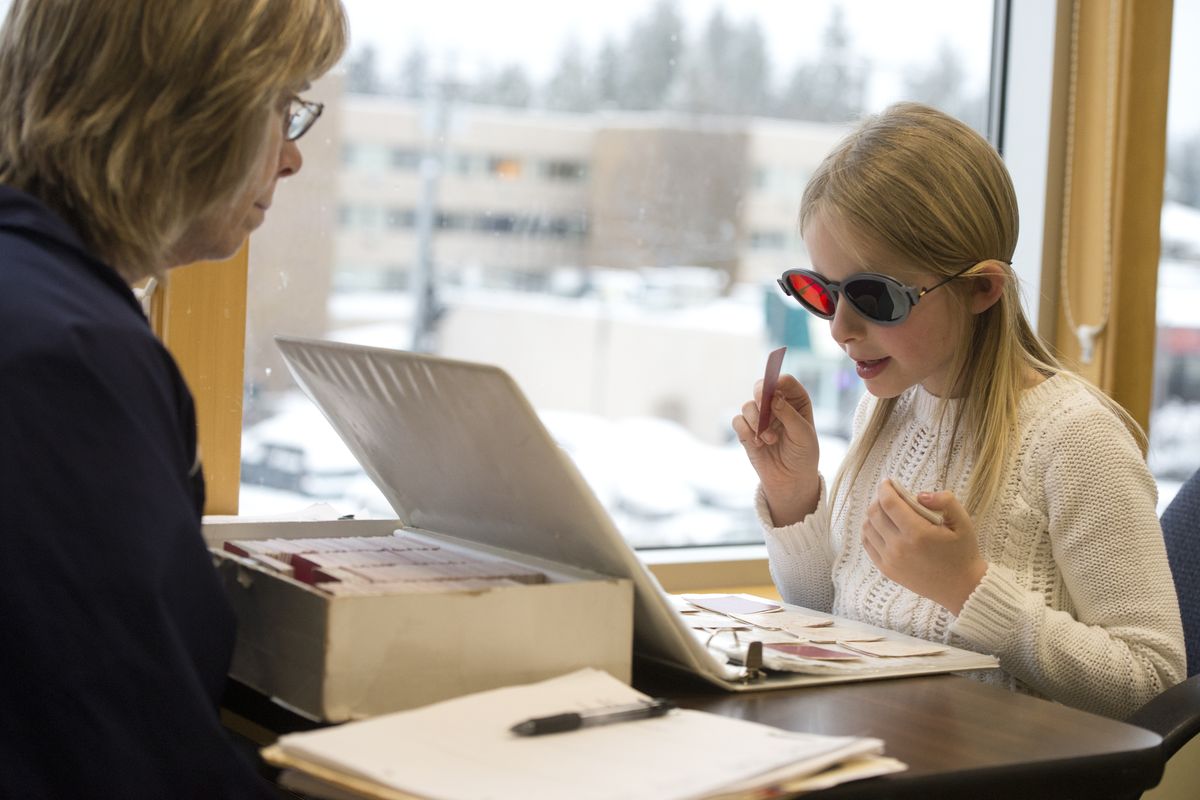Vision therapy helps treat, correct neurological issues

During first grade, Grace Klinkenberg was clearly a bright girl. She had a large vocabulary and performed well on verbal assessments. But she struggled with reading, falling further and further behind her peers.
“Grace was going backward,” said her mom, Shellie Klinkenberg. “She was having debilitating headaches. She wasn’t at grade level and we knew something was wrong.”
Of course, they checked her eyesight but it was 20/20, so they didn’t think she had a vision problem. But after Grace’s veteran teacher tried every trick in her book, she suggested the Klinkenbergs see Dr. Todd Wylie, a South Hill optometrist who practices vision therapy for a range of neurological vision issues.
“It’s not always what we see, it’s what we perceive,” said Wylie, explaining that many of his patients have excellent eyesight, like Grace, but may experience reading, sensory and coordination problems because their visual system isn’t working correctly with the brain.
The problem, he said, is neurological and often treatable. His office tests a variety of ways the visual system works with the brain, including pupil response, eye movement, tracking, focusing, eye teaming, hand-eye coordination, and visual perception. All affect how well the brain receives and processes visual stimuli.
For Grace, two treatable issues were visual field deficiency and suppression of binocularity. Simply, she had tunnel vision and her eyes weren’t working together properly, which made reading difficult.
“I skipped lines. If I was reading I’d go down to this line and I was missing half the book,” Grace said.
She began weekly therapy in April 2013, with additional home therapy five days a week for about 20 minutes. Now near the end of treatment, her improvement has been remarkable, according to her mother.
“In nine months, I can’t believe how far she’s come,” said Klinkenberg, adding that the second-grader now has the reading comprehension skills of a fourth-grader and has better coordination in ballet, which she’s studied for five years. Additionally, her headaches have disappeared and she is more confident in school.
Wylie said vision therapy aims to retrain the brain, based on individual patient needs.
During a recent session, Grace put on glasses with one red eye filter and one green. Then she played a matching game of cards that had different bears on white and red backgrounds.
The game, said vision therapist Chris Hill, helps her pay attention to detail with both eyes. Because of the colored glasses and cards, if one eye stops working she can’t see the bears.
Other therapy techniques included computer games, reading a 10-by-10 grid of letters from the outside in while wearing an eye patch, and syntonic light therapy, which she did at home, using a color-filtered light.
“It’s cool but it’s boring too,” said Grace, describing how she’d stare into the light for 20 minutes while her mom read her a story. She’s since graduated from light therapy after showing measurable improvement with her peripheral vision.
Hill demonstrated the test used to assess the range of Grace’s visual field, the girl’s forehead supported while she focused on an X at the center of a piece of paper several inches away.
The therapist marked each time a tiny bead came into Grace’s view or left it. She then connected the dots, creating a circle. In the past nine months, the circle’s diameter has grown from the size of a plum to something closer to a salad plate.
“This allows her to take in more information and process things,” Hill said.
On the North Side, optometrist Dr. Eric Hussey is also treating children with learning or reading problems that may be caused by neurological vision issues.
Hussey has focused research on intermittent central suppression, which he described as a dropped signal from one eye for a few seconds, repetitively.
He used the analogy of a computer mouse. If you stop moving the mouse, the screen saver makes the display go blank. Similarly, if the motion or detail signal from the eyes to the brain isn’t strong enough, part of the image may go blank.
“Project that to something like reading … The brain gets a goofed up picture,” said Hussey, explaining that if the image from one eye drops out, even for a few seconds, when it comes back on it might not be focused on the same thing.
“Brains are pretty smart. They put it back together,” Hussey said. But he said that while reading, this creates a lot of word confusion.
Symptoms may include poor reading comprehension, seeing double words that shouldn’t be repeated, words that appear and disappear, and spelling and hand writing issues as well as sports coordination problems.
“As a group, these kids are more likely to catch a softball with their face,” he said, explaining that when two-eyed vision turns to one-eyed vision for a moment, depth perception is affected.
“They’re tracking a softball and then it goes to flat,” Hussey said. “That’s when they lose track of the ball.”
Like Wylie, Hussey said vision therapy attempts to strengthen and improve the interaction between vision and neurology.
“We’re talking brains,” Hussey said. “You can have eyes that see 20/20 and the brain is not getting the picture. We want to get the brain that picture so it can do what it’s supposed to and read.”
Possible causes of visual neurological problems could include genetics, improper development or trauma, such as a head injury or whiplash.
But vision therapy, both doctors said, usually has lasting results. Once completed, it rarely needs to be repeated.
While some insurance companies cover vision therapy, many don’t and costs can top several thousands of dollars.
“A lot of the time we’re the last resort,” Hussey said. “If you have the opportunity to treat and improve that, a lot of things get easier.”